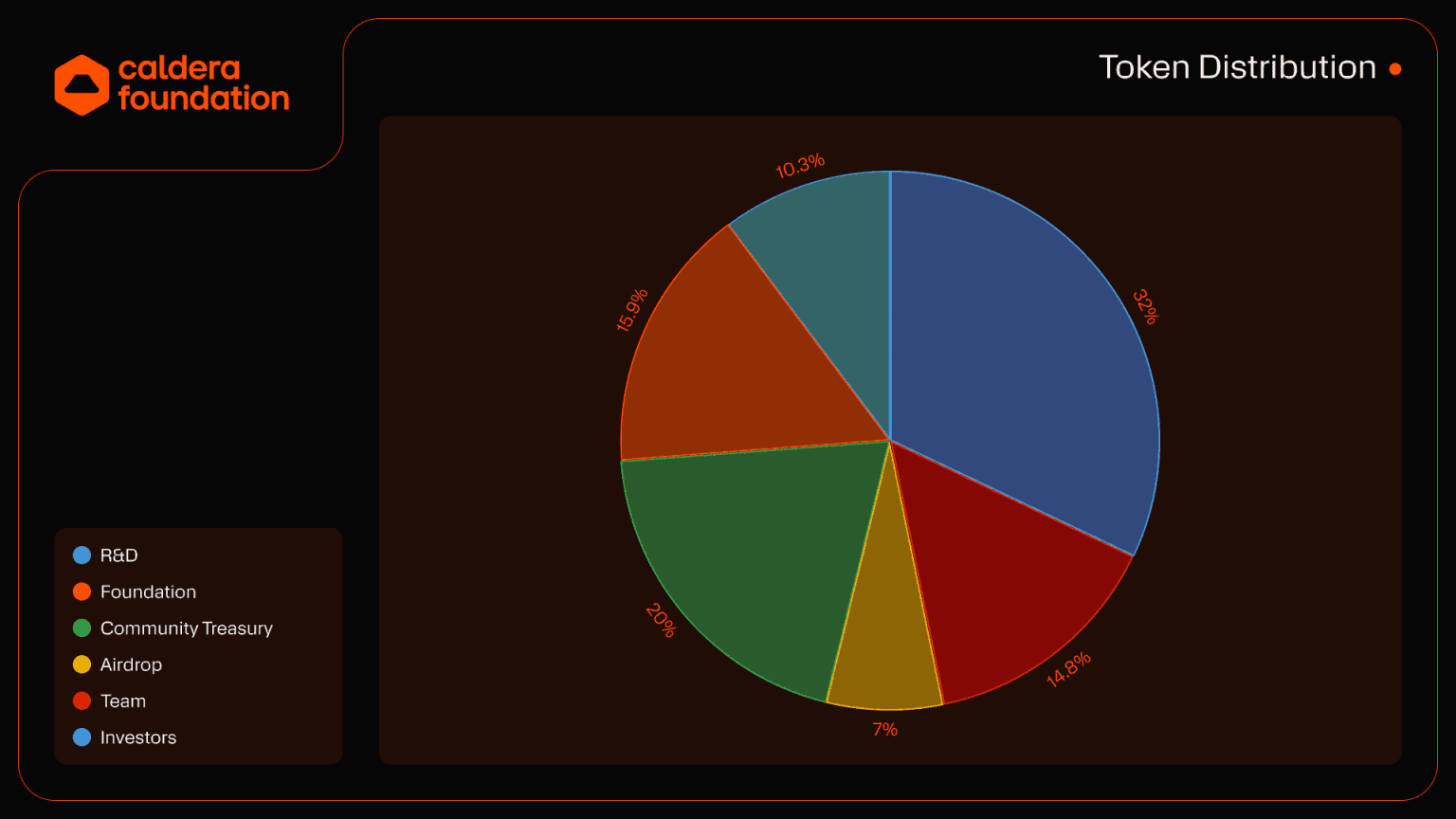Caldera is a Rollup-as-a-Service (RaaS) platform designed to make the deployment and management of custom Ethereum Layer 2 rollups easier than ever. Whether it’s Optimistic Rollups or ZK Rollups, developers can use Caldera to quickly deploy bespoke rollups with full control over gas tokens, available data layers (like Celestia or NEAR), and technology stacks (like Arbitrum, Optimism, or zkSync). By integrating multiple rollup chains into a unified framework, Caldera enables liquidity sharing, efficient cross-chain communication, and a consistent user experience across ecosystems.
Caldera's distinguishing feature is its high modular flexibility. Each rollup can choose its execution environment (EVM or SolanaVM), preferred available data layer (Ethereum mainnet, Celestia, NEAR, etc.), and even select between native ERC-20 tokens or ETH for gas fees. This level of customization allows projects to optimize transaction speed, cost-effectiveness, and security parameters according to their specific needs.
To date, Caldera (ERA) supports over 50 rollup chains, managing total value locked (TVL) from $400 million to $600 million and serving over 27 million wallets. This scale not only highlights its importance in the context of Ethereum's scalability but also reflects a solid foundation for the ongoing development of the ecosystem.
HOW CALDERA (ERA) WORKS
Caldera (ERA) operates through two core components: Rollup Engine and Metalayer.
✅ Rollup Engine
Rollup Engine streamlines the process of building and deploying application-specific blockchains. It allows developers to fine-tune performance metrics such as throughput, latency, privacy, and cost. Thanks to its modular architecture, this tool can integrate with various virtual machines, available data layers, and custom modules – positioning Caldera (ERA) as a leader in the modular blockchain movement.
✅ Metalayer
Metalayer acts as the interactive backbone of Caldera, designed to simplify interactions across the ecosystem. Serving as a seamless communication bridge, it facilitates smooth cross-chain transactions based on intent while allowing all connected blockchains to share liquidity. This interactive protocol transforms isolated capital networks into a unified on-chain internet.
CALDERA (ERA) VS ETHEREUM
📌 Caldera (ERA)
Built on advanced rollup technology (such as OP Stack and Arbitrum Orbit), Caldera (ERA) offers a flexible, high-performance Layer 2 execution environment with extremely high throughput and low transaction costs. ERA supports payments with the popular cross-chain gas token ERA, ideal for next-generation applications that require customization, scalability, and interoperability, such as gaming, DeFi, and SocialFi.
📌 Ethereum Mainnet (Layer 1)
Architecture: A multi-purpose, monolithic blockchain that serves as a global payment layer for the digital asset economy.
Performance: Throughput of approximately 15–30 TPS, with network congestion and delayed confirmations during peak usage times.
Cost: High and unstable gas fees, which can be a significant barrier for ordinary users.
$ERA is the native utility and governance token of Caldera (ERA), designed to balance incentives among developers, users, and the community at large. Within the Caldera ecosystem, ERA serves three main purposes:
➤ Transaction fees – Serving as a common gas token for all integrations provided by Caldera, streamlining fee payments and liquidity flows without the need for multiple tokens.
➤ Staking – Holders can stake ERA to ensure cross-chain message verification, support the anti-fraud system, and earn rewards. Staking also enhances network security and grants governance privileges, such as double voting rights for locked tokens.
➤ Governance – Empowering on-chain governance, allowing holders to vote on protocol upgrades, fee structures, ecosystem funding, and elect subcommittees (e.g., Technical Security Committee).
🪙 ERA Tokenomics
Token name: Caldera (ERA)
Total supply: 1,000,000,000 ERA
Maximum supply: 1,000,000,000 ERA
Circulating supply: 148,500,000 ERA (accounting for 14.85% of total supply)
Upon launch, ERA has a fixed total supply of 1 billion tokens, with the majority allocated in the Token Generation Event (TGE). To encourage long-term commitment, allocations for the team and investors will follow a multi-year vesting schedule.

✏️ Token distribution
Investors – 32.075%
Core team – 14.75%
Research and development – 10.235%
Fund (Community & Treasury) – 35.94%
Airdrop– 7.00%
FUTURE PROSPECTS OF CALDERA (ERA)
Caldera (ERA) has quickly emerged as a leading rollup infrastructure provider, supporting dozens of active Layer-2 chains and managing hundreds of millions of dollars in total value locked (TVL). The launch of ERA marks a significant shift towards a token-managed ecosystem. To maintain its growth momentum, Caldera must realize its vision for Metalayer interoperability, attract impactful dApps, and deploy attractive staking or utility programs to drive demand for ERA.
Positively, Caldera benefits from strong venture capital backing, unique flexibility of multiple virtual machines (VMs), and natural cross-chain bridging – an advantage that many competitors lack. These strengths help ERA secure an important role in the rapidly evolving rollup landscape. However, market saturation and increasing regulatory scrutiny may slow adoption or dampen enthusiasm for the token.
For investors, key metrics to monitor include on-chain data, TVL trends, new rollup launches, governance proposals, and the price performance of ERA in the spot market. If Caldera continues to provide robust development tools and fosters an active builder community, ERA could evolve into a leading governance asset for the Layer 2 space.
♡𝐥𝐢𝐤𝐞💬 ➤ @Caldera Official #Caldera $ERA
